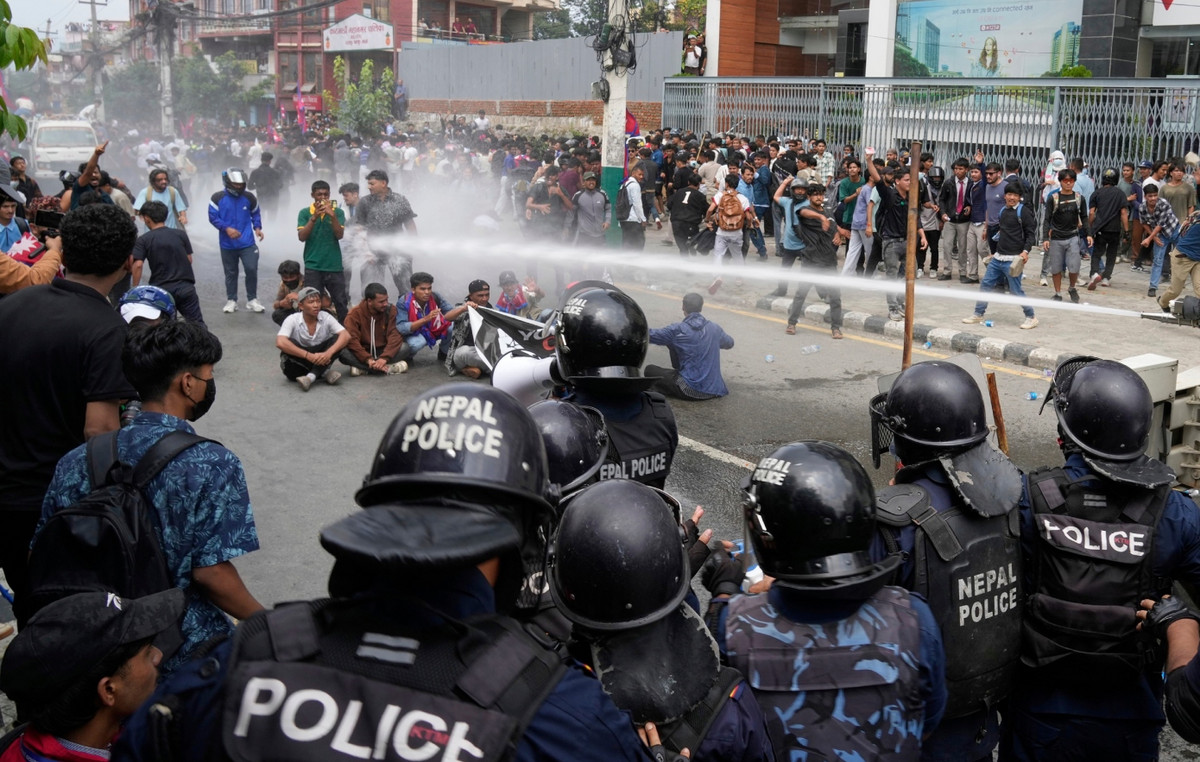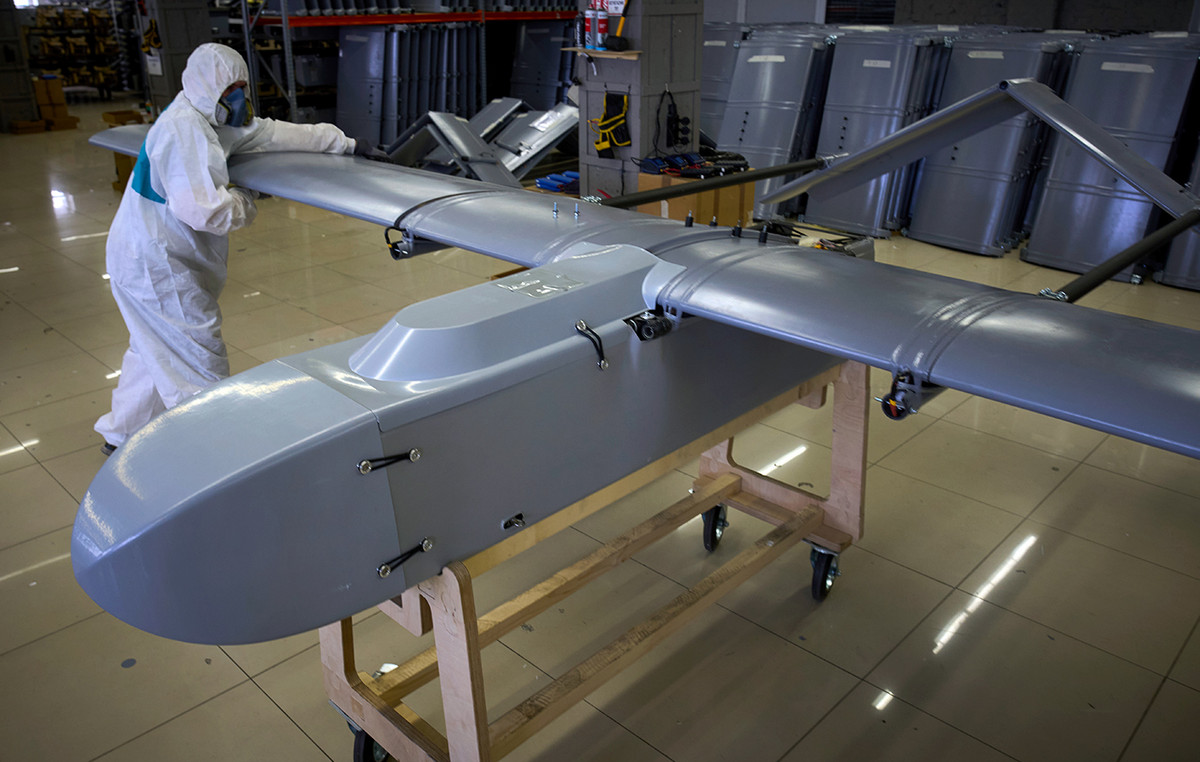The first time Masha Maltsava attended Burning Man—the annual “ephemeral city” that attracts thousands of free-spirited revelers in the Nevada desert—she packed way too much.
“I prepared for three months,” she recalled in an interview with CNN . “And I read every packing list, every Reddit thread, every WhatsApp chat, getting ready for Burning Man last year.”
But this year — when heavy rain turned the remote site into a muddy mess that forced participants to seek shelter and conserve precious resources — Maltsava wasn’t quite as prepared.
She became one of about 70,000 people trapped at the event when the Black Rock Desert received more than two months’ expected rainfall in just 24 hours.
The storms, which began on Friday (1) and continued through the weekend, turned the desert sand into a liquid and slippery clay that made it impossible for drivers to enter or exit.
“I was overly prepared last year — but I think this is the right way to go about it,” she said.
While photos of Burning Man’s elaborate art installations and people in intricate costumes make for a glamorous event, the weekend’s harsh weather underscored the challenges the experience poses. Participants spend seven days in an isolated, desert environment with limited access to outside resources and infrastructure.
“Self-sufficiency” is one of the fundamental principles of the event. Organizers emphasize that participants are ultimately responsible for their own health and safety.
The event’s website advises people on how to prepare for the seven-day festivities, including in case of extreme weather conditions. See how the organizers suggest preparing for a unique experience.

A place that will “try to kill you”
The annual celebration takes place in Nevada’s Black Rock Desert, a remote and isolated area where roads become unreliable in difficult weather conditions. The closest settlement is Gerlach, with just over 100 inhabitants. Reno, the nearest city, is 150 km away.
“The Black Rock Desert is a huge flat prehistoric lake bed composed of a hard alkaline layer surrounded by majestic mountains,” says Burning Man on its website. “Daytime temperatures routinely exceed 38°C, with extremely low humidity.”
Organizers are upfront about the location on the event’s website: “It’s one of the most beautiful, utterly ethereal venues in the world, which will try to kill you.”
Burning Man informs attendees that “ultimately, the responsibility for your personal health and safety rests with you,” part of the event’s “spirit of radical self-reliance.”
While the festival provides “essential safety infrastructure,” including potty pots, ice for sale, and on-site first responders, amenities are few and far between. People usually depend on the equipment they brought. Handwashing and showering facilities are the responsibility of each campsite.
The festival suggests a long list of equipment for each participant, including food and drinks, an “extensive” first aid kit, warm clothing and fire extinguishers.
In addition, the burners, as the event calls attendees, should bring a “bucket of poop,” especially in case the rain renders the potties inoperable. The website recommends a 18-gallon utility bucket with a lid and garbage bags.
The list goes on: attendees are encouraged to bring a portable shower, protective waterproof bags for any electronic equipment, a battery-powered or solar-powered radio, and warm clothing, as temperatures can drop as low as 10°C when the sun goes down. put.
Video: Rain and mud stop 70,000 people from leaving the festival
In the case of rain, Burning Man emphasizes the importance of wooden blocks to help keep generators and other electronic devices dry and electrical tape to seal connections.
Nicole Gollub, a four-time Burning Man participant, said that despite her previous experience and serious preparations, she still wasn’t ready for this year’s heavy rain.
“I don’t think anyone was really prepared for what we experienced,” said Gollub, who left the event during a break in the rain. “Usually it rains and stops, but it just doesn’t stop raining.”
Amidst the difficult weather, the atmosphere was “peaceful” when she left, she said. “Everyone else was pretty calm and helping each other out,” said Gollub. “I would have felt fine if we stayed too, even if it was very uncomfortable.”
Like Maltsava, Gollub said preparing for the worst is a crucial part of the Burning Man experience. “You basically have to plan the next seven days alone in the desert,” she said. “It takes a little planning to get it right.”
And despite organizers’ efforts to prepare and alert attendees, “there are always people who aren’t as prepared,” she said. And as the event has become more popular, it has attracted participants who may not have understood the spirit of “self-reliance”.
“There are a lot of people who come just for the party and think it’s like a big festival,” she said.
Still, Burning Man veterans are supportive of these newcomers, according to Gollub. “When people need help, they are here with open arms, trying to help each other,” she said.
Video: About 70,000 are stranded in the festival area after torrential rains in the US
Omar Sedky, another participant this year, also said that more prepared participants helped compensate those in need.
“We’re overly prepared,” he said of his own group, which rented a trailer for the event. “And we were also able to bring in other people when the rain started.”
Participants who opted to camp in tents on the “playa”, the normally dry lake basin where the event is held, were in some of the worst positions when the rain started, he said.
Sedky said one of the main challenges at the site has been limited communication at the radio station, as well as vehicles getting stuck in mud and creating traffic jams. He is planning to take a seven-month pregnant woman out of the area in his trailer, he said.
“One thing you’ll see a lot here is the sense of community,” he said. “So if someone needs help, there are lots of people offering it.”
“Afraid of missing the experience”
While the photos of muddy campsites and flooded streets may seem daunting, attendees said that collaborating to survive in a harsh environment is part of what Burning Man is all about.
Maltsava, who left on Saturday for a work commitment, recalled: “It was so beautiful to see people helping each other and sharing supplies, batteries, energy, water, food and shelter.”
She walked 10 miles (16 km) to get out in knee-deep water wearing platform boots that broke in the thick mud. Even so, she said, “it almost had FOMO going away,” that is, fear of missing out on the experience others were having there.
Attendees were still partying and spending time together when she left, she said.
“To be honest, I wouldn’t change a thing,” she said. “I would still go even though I knew it would be a mess.”
For Lubna Sharief, a six-time Burning Man participant, the harsh camp conditions are part of what makes the event so special.
“The challenge, survival skills and preparation are a big part of it,” she said.
Sharief, who did not attend this year’s celebration, said that, like Maltsava, she had prepared extensively for her first Burning Man experience in 2011. Even so, she said, “it didn’t really get it right.”
“You need help,” she said, emphasizing the crucial role the community plays in Burning Man. “We’re all out in the wilderness together, sharing what we’ve gathered.”
Sharief said that in previous years, she had prepared for the rain by bringing duct tape and garbage bags to cover her boots if necessary.
“One of the good mantras is that you can’t use it if you don’t bring it,” she said. “You can bring extra canned food, extra armbands, and rain supplies and kitty litter for a ‘toilet bucket,’ even if it doesn’t rain.”
The event’s emphasis on community balances its focus on self-reliance, she said.
“Bring everything you think you need,” Sharief said. “But if you have a problem, you will also find the person who can help you.”
Source: CNN Brasil
Bruce Belcher is a seasoned author with over 5 years of experience in world news. He writes for online news websites and provides in-depth analysis on the world stock market. Bruce is known for his insightful perspectives and commitment to keeping the public informed.







